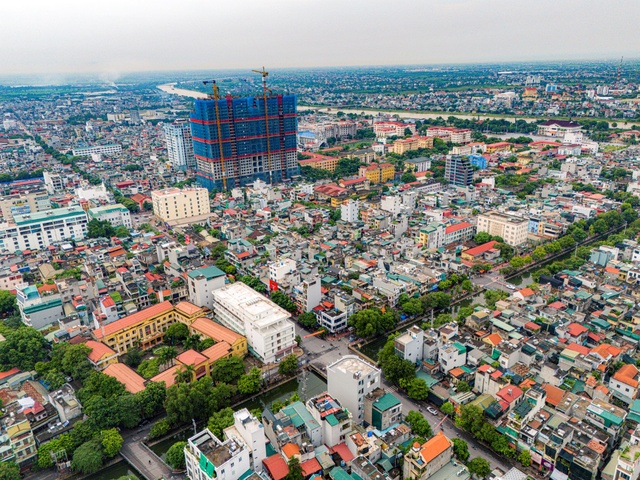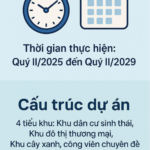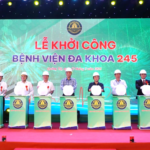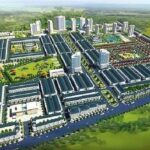The provinces of Hung Yen and Thai Binh will merge to form a new province named Hung Yen, with its political and administrative center located in the current Hung Yen province.
The merger plan is designed based on integrating the entire natural area and population of the two provinces: Hung Yen, with an area of 930.20 km2 and a population of over 1.4 million people; and Thai Binh, with an area of 1,584.61 km2 and a population of over 2 million.
Post-merger, the new Hung Yen province will be the smallest in the country in terms of area, covering approximately 2,514.8 km2, but with a significant population size of 3.5 million people.
In its new development strategy, the merged province aims to establish a comprehensive economic center, combining agriculture, industry, and services. It will maximize its geographical advantages, transportation connections, and investment potential to become a key development hub in the Red River Delta region.
Hung Yen is already transforming into a dynamic industrial hub in the North. In the first quarter of 2025, its GRDP reached 8.96%, surpassing the economic growth scenario set by the province at 8.52%. The province ranked 9th in the Red River Delta region and 17th in the country.
In 2024, the province also recorded a record investment attraction of nearly USD 4 billion, including 180 new projects, with significant contributions from multinational corporations such as Nitto, Molex, and Arizon. To date, the province has a total of 2,371 valid investment projects, with registered capital of more than VND 370,000 billion and over USD 8.5 billion.
Currently, Hung Yen has 12 industrial parks (IPs) covering an area of over 3,123 hectares, 10 of which are already operational. The province aims to complete investment dossiers for five more IPs in 2025, develop at least 150 hectares of technical infrastructure, and attract new and adjusted investment projects with a total registered capital of USD 1 billion or more.
Notably, due to its proximity to Hanoi, Hung Yen enjoys a significant geographical advantage and convenient connections to major seaports like Hai Phong and the Noi Bai International Airport. The province has been witnessing strong investments in its road infrastructure, including the road connecting the Hanoi-Haiphong and Cau Gie-Ninh Binh highways, the Tan Phuc-Vong Phan road project, the Hung Yen-Hanoi linkage road, and the heritage road along the Red River, among others.
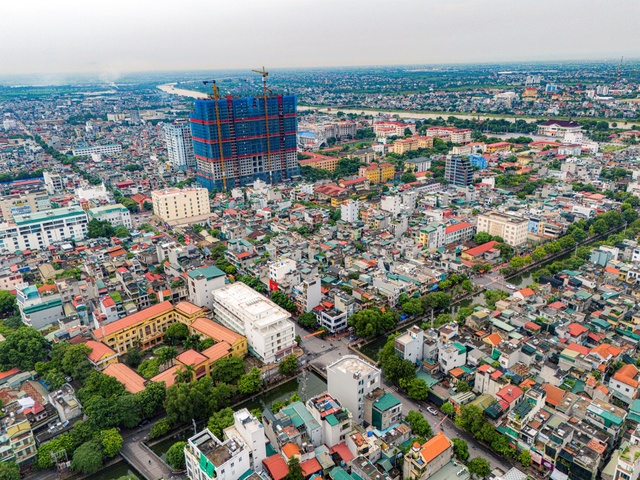
Meanwhile, Thai Binh is a coastal province in the Red River Delta, boasting a 52-kilometer coastline and five major river gates, providing a vast tidal flat area of over 16,000 hectares. This presents numerous potentials and strengths for the development of its marine economy. Thai Binh is also traversed by National Highways 37, 37B, and 39, as well as Provincial Road 456.
Thai Binh’s economy has been witnessing a remarkable surge. In the first quarter of 2025, its GRDP increased by 9.04%, the highest in the 2020-2025 period and higher than the national GDP growth rate of 6.93%. The average GRDP growth rate over the past five years is estimated at 8.36%/year, bringing the GRDP in 2025 to over VND 151,200 billion, 1.7 times higher than in 2020.
According to the Thai Binh Provincial Planning for the period 2021–2030, with a vision towards 2050, the province identifies industry as the main driver of economic growth. Currently, Thai Binh has established 11 IPs covering an area of approximately 2,700 hectares, offering ready-to-use clean land to accommodate investment projects. Notably, the Thai Binh Economic Zone has attracted a total of 369 projects, with registered capital amounting to approximately VND 208,000 billion.
The province of Thai Binh has set ambitious targets for 2025, aiming to attract USD 1.2 billion in foreign investment, achieve a 22% growth in industrial production value, and a 15-17% growth in construction value.
Significantly, Thai Binh has been approved by the Government to establish the Thai Binh Economic Zone, spanning over 30,000 hectares. This is one of 16 key coastal economic zones in the country, envisioned to become a center for industrial, energy, urban, service, and marine economic development. The Lien Ha Thai Industrial Park within the Thai Binh Economic Zone is currently regarded as a pioneer in investment attraction.
Both provinces boast a rich historical and cultural heritage. Hung Yen is renowned for Pho Hien, a bustling trading port in the past, while Thai Binh is home to numerous traditional craft villages and historical relics. This fusion will facilitate the preservation and promotion of cultural values, as well as the development of cultural and ecological tourism.
The merger of Thai Binh and Hung Yen will result in the formation of a new province with a significant economic scale in the Red River Delta region, combining industrial and service development with marine economy and tourism. It will maximize the potential and advantages of geographical location, land resources, inter-regional connectivity, domestic trade, and cultural, ecological, and agricultural tourism development.
The Trump Organization’s $1.5 Billion Mega-Project: A ‘Gigantic’ Development Just 40km from Ho Guom, Hanoi
The Trump Organization’s proposed urban complex, eco-tourism resort, and golf course in Hung Yen has just been given the green light. This ambitious project promises to be a game-changer, offering a unique blend of luxury, sustainability, and world-class leisure facilities. With the Trump name synonymous with quality and opulence, this development is set to become a prestigious landmark and a sought-after destination for both local and international visitors.
The Billionaire’s Behemoth: VinGroup’s $1.7 Billion Mega Urban Project in Vietnam’s Northern Industrial Heartland
Vingroup, Vietnam’s prominent conglomerate, has unveiled ambitious plans to develop a large-scale urban project with a staggering investment of over VND 41 trillion. This monumental endeavor is expected to catalyze urban and economic growth in the region, setting a new benchmark for development in Vietnam.

